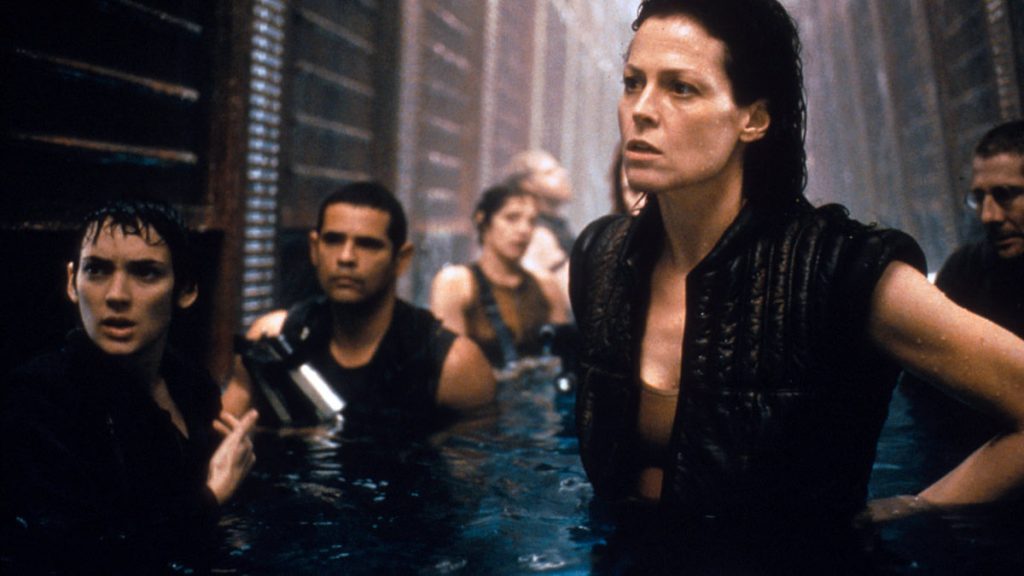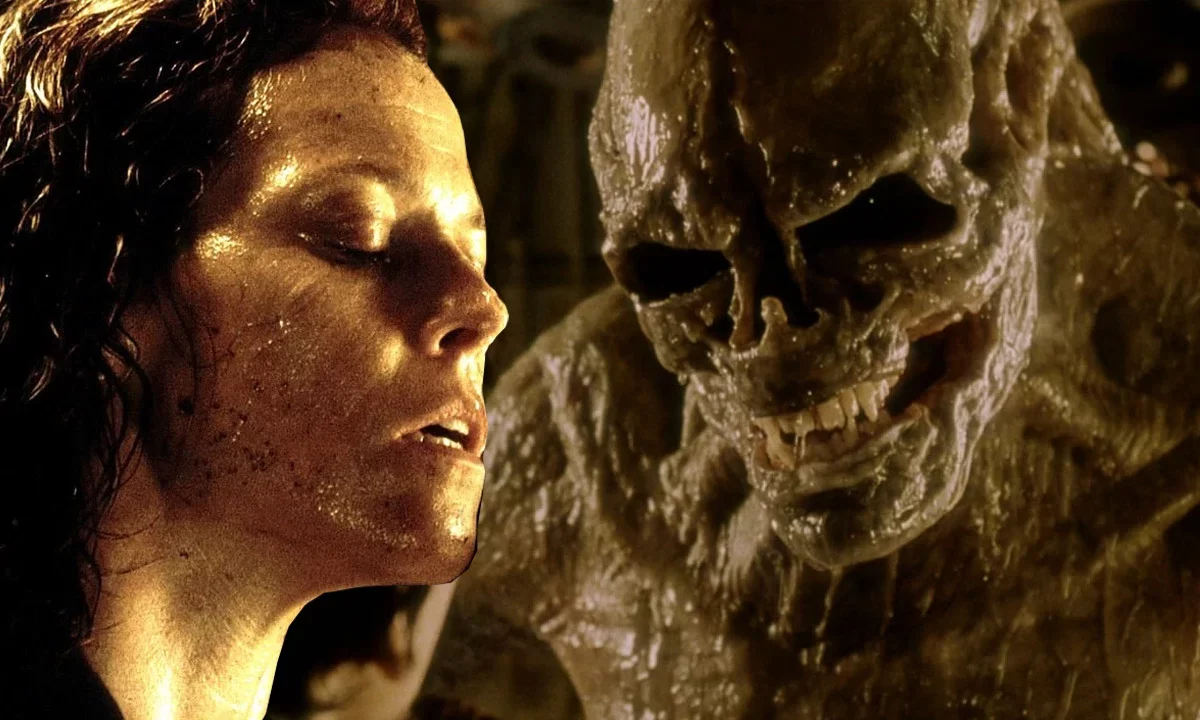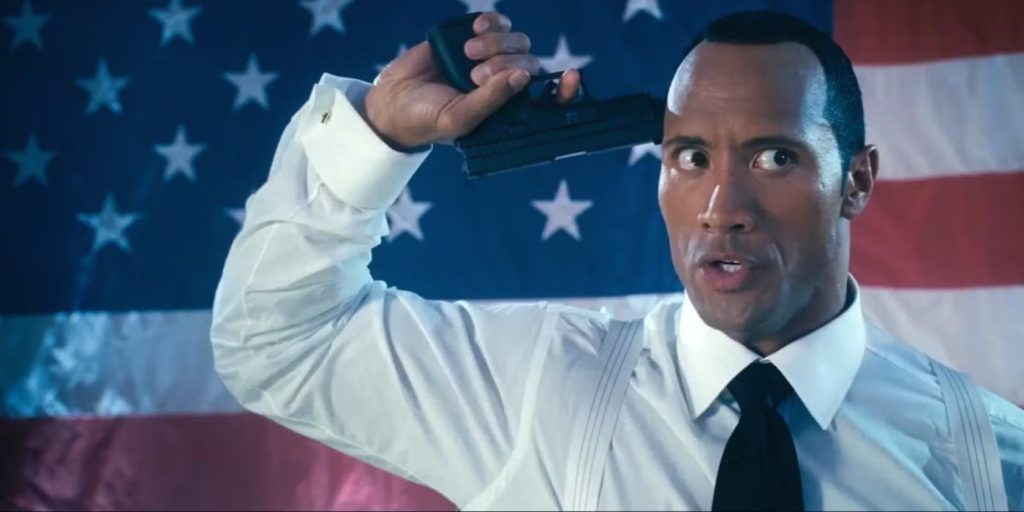Third films in series with extremely lofty legacies to live up to have a tendency to underperform with audiences and critics — despite being very good movies in their own right. Members of this illustrious club include The Godfather: Part III, Halloween III: Season of the Witch, Terminator 3: Rise of the Machines, and The Dark Knight Rises.
But the extent to which Alien 3 fails to even remotely resemble its saga predecessors boggles the mind. Dogged by a lousy story, cringeworthy special effects, and even worse cinematography, the inauspicious feature directorial debut from David Fincher was notoriously tampered with by 20th Century Fox, and the bizarrely beloved “assembly cut” — released without Fincher’s involvement, yet based on his editing room notes — just adds 30 more minutes of bullshit.
Like a cinematic Charles Barkley, Fincher famously rebounded with his follow-up, Se7en, and the series likewise got its groove back five years later in 1997’s Alien: Resurrection. With the first Alien TV series, Alien: Earth, out this week, full saga rankings are almost certain to pop up across social media like ovomorphs. And though Jean-Pierre Jeunet’s installment doesn’t belong on the same tier as Alien or Aliens, it’s firmly on the next level with the similarly underrated Prometheus.
While Jeunet’s distinct sensibilities were four years away from hitting (and being embraced by) the mainstream via Amélie, his darkly whimsical style was known to a decent slice of indie moviegoers by the late ’90s thanks to Delicatessen and The City of Lost Children. Similarly, screenwriter Joss Whedon had established himself through scripts for Buffy the Vampire Slayer and Toy Story, and TV audiences were beginning to consider him as a cult nerd icon through the Buffy series, which was roughly halfway through its second season when Resurrection premiered that November.
Though Alien 3 is a subterranean bar to clear, these two up-and-coming filmmakers overachieve as their oddball interests dovetail nicely in the service of Ellen Ripley’s surprisingly ongoing story. Roll your eyes all you want at United Systems Military (USM) scientists cloning Ripley (Sigourney Weaver) 200 years after her death and mixing her DNA with that of a Xenomorph queen in hopes of breeding, studying, and researching the aliens aboard the spaceship USM Auriga, but it’s a believable turn of events in a series defined by greed and underestimating a species that short-sighted humans think they can control.
Any conceit that’s true to the films’ anti-corporate themes is welcome to, er, resurrect the saga’s strengths that are missing in Allen 3, and Whedon’s concept indeed inspires an all-around return to form. In addition to the creative story, you’ve got a decidedly visual filmmaker behind the camera on par with Ridley Scott and James Cameron, plus one of our greatest cinematographers in Darius Khondji (Se7en; The Lost City of Z). The crisp imagery firmly connects Resurrection to the series’ first two (and subsequent three non-vs. Predator) installments on a quality level, and Whedon’s script likewise carries on multiple traditions abandoned by Walter Hill and the rest of the Alien 3 writing team.

Lead scientist Dr. Jonathan Gediman (Brad Dourif), Gen. Martin Perez (Dan Hedaya), and their respective underlings aboard the Auriga ably check the box of clearly defined human villains that are all but absent in Alien 3’s maximum security prison setting. And while the rag-tag group of mercenaries from the ship Betty that make a longer than anticipated stay aboard the Auriga aren’t in the same league as the crew from the Nostromo or the Marines who inhabit the Sulaco, they more closely resemble Ripley’s colleagues in Alien and Aliens than the forgettable convicts from her third space rodeo.
Most importantly, Whedon brings back plenty of Xenomorph action, nearly to the point of excess. Expanding from the single entity in the previous film, he serves up a full brood — and they all look terrific. While poor digital renderings taint Alien 3, Jeunet’s film benefits greatly from the technological advances in the interim, particularly in the execution of a terrifying underwater sequence. And though even Fincher’s installment features laudable tactile creature effects, the big, slick, smooth, Xenomorphs in Resurrection are the most impressive iterations of the series up to that point.
Central to that appeal is their viscous nature. Xenomorphs have grown increasingly fond of salivating with each new Alien film, but the batch in Resurrection drip so much fluid that one wonders if Keegan-Michael Key and Jordan Peele drew inspiration from them for Peele’s extremely nervous sweating boyfriend character in Key and Peele’s now meme-famous “Browser History” sketch.
Matching the beasts is a comparably fresh take on Ripley. Far from the same Final Girl we’ve come to know and love over the past two decades of Weyland-Yutani Corporation oppression, she’s given fun, different abilities by Whedon, including superhuman strength, acid blood, and the basketball prowess of an NBA All-Star. Plus, Ripley’s jaded outlook on authority figures and her genetic link with the Xenomorphs yields hithertofore unseen responses from our hero that keep viewers guessing which side she’ll choose.
If that doesn’t warrant the #4 spot on folks’ rankings of Alien movies, I don’t know what does.
“Alien: Resurrection” is streaming on Hulu.



